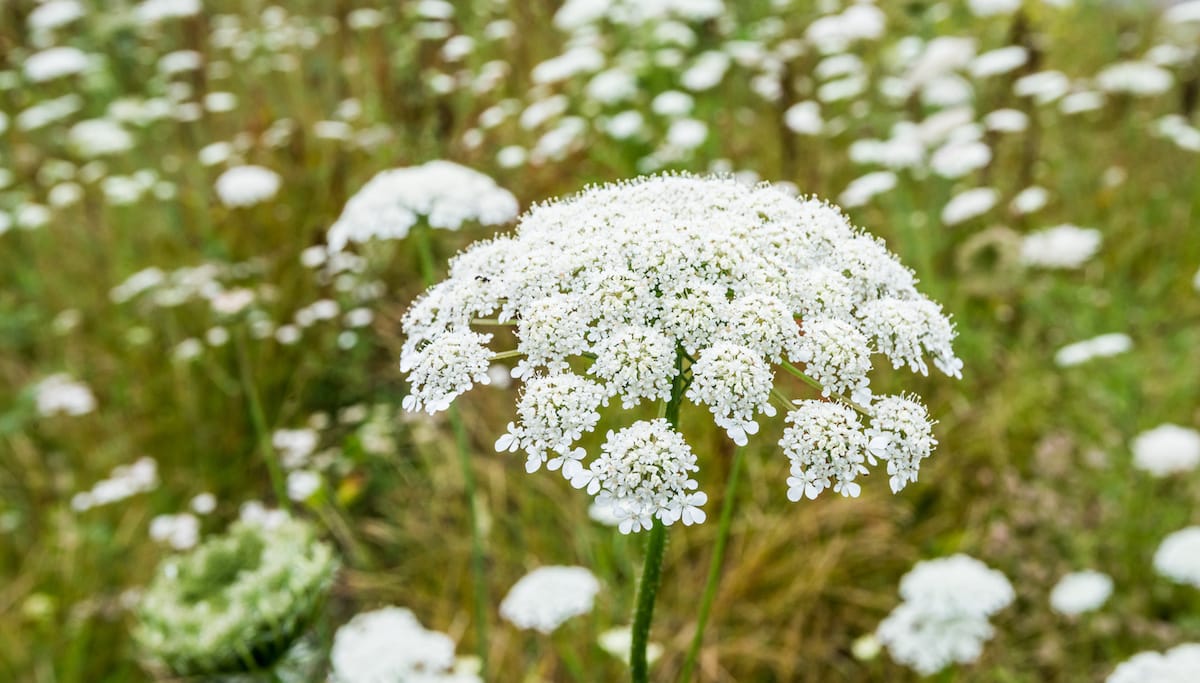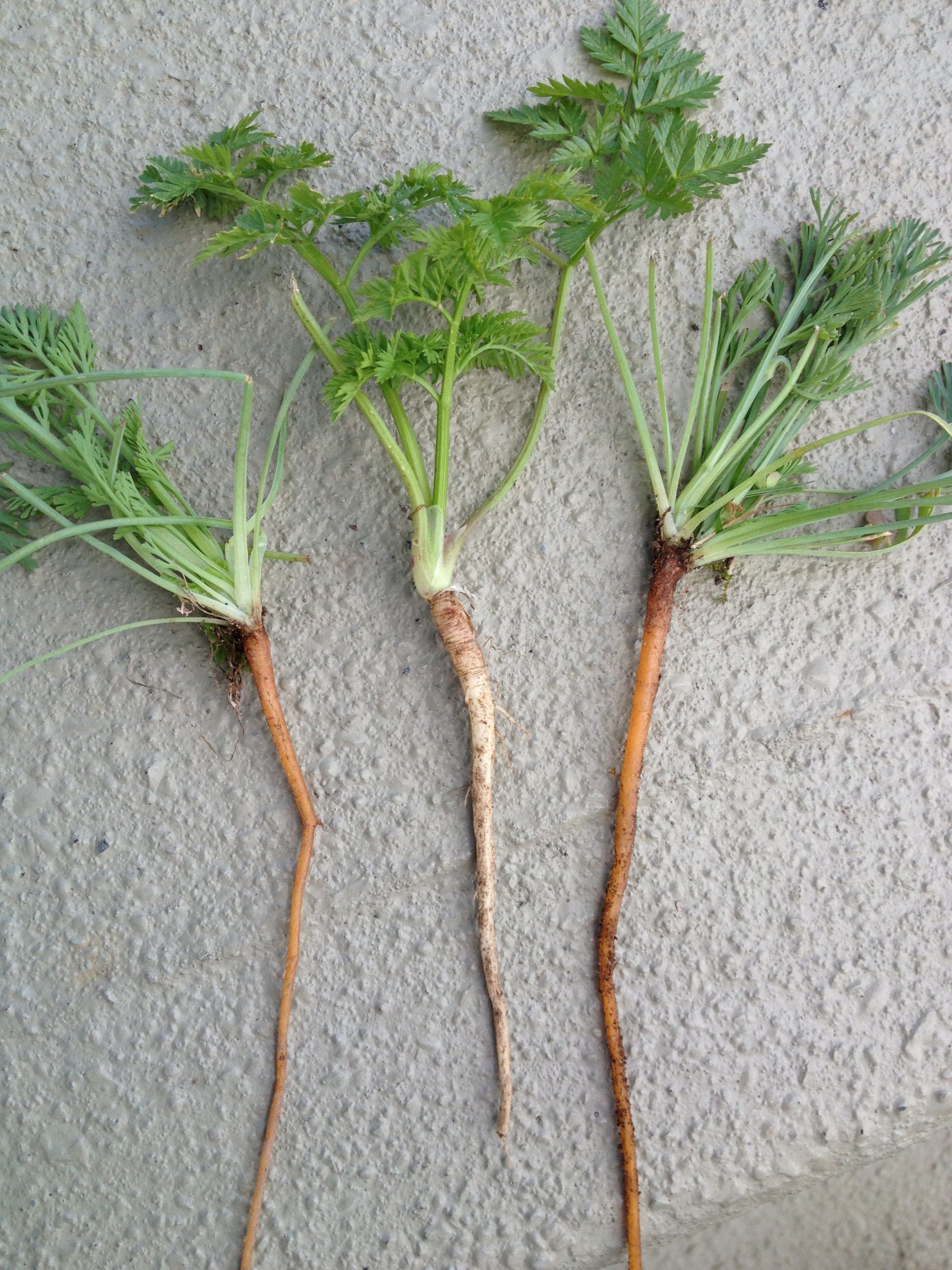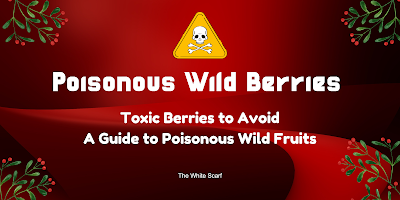Lace by the Roadside: A Close Look at Wild Carrot and Its Deadly Twin
Introduction: Wild Carrot or Dangerous Lookalike?
While walking along a quiet street the other day, I spotted something familiar yet wild, tall, elegant plants with lace-like white flowers standing proud among the weeds. They looked delicate, almost ornamental, with feathery green leaves and thin stems. I snapped a photo and went home to look it up. It turns out, I had found wild carrot, also known as Queen Anne’s Lace (Daucus carota).
But here's where things get interesting and a bit risky.
 |
| Credit: Amber Kanuckel, farmersalmanac.com |
What is Wild Carrot?
Wild carrot is the ancient ancestor of our modern orange carrot. It grows in many parts of the world, often along roadsides, meadows, and untamed spaces. The flowers bloom in white clusters called umbels and often feature a tiny dark purple flower in the center as if nature added a beauty mark!
Despite its charming look, wild carrot hides a complicated truth: it closely resembles deadly plants, such as poison hemlock and water hemlock.
 |
| Credit: Walter Reeves, walterreeves.com |
 |
| Poison hemlock (Conium maculatum) blooming near the Truckee River, Mayberry Park, June 2015. Photo: K. McCutcheon. Credit: truckeeriverguide.org |
Is It Edible?
⚠️ Technically, yes
The young root of the wild carrot is edible in its first year. It smells like a carrot and has a similar flavor, although it’s usually smaller, paler, and much tougher than the ones you buy in supermarkets.
But here's the catch: wild carrot has dangerous lookalikes, and misidentifying it can be fatal.
Safety First: Don’t Eat Unless You’re 100% Sure
⚠️ Some key differences:
- Wild carrot has a hairy stem. Poison hemlock has a smooth, purple-spotted stem.
- Wild carrot smells like carrot. Crush the root or leaves and sniff them.
- Flower shape: Umbrella-like with possible central dark flower (wild carrot only).
- Growth habit: Biennial. The root is best harvested in the first year, before it flowers.
If you’re in doubt, do not pick or eat it. Seriously. The consequences of eating a lookalike can be deadly within hours.
| Wild carrot flower shape like Umbrella, Credit: Pinterest |
How to Safely Pick Wild Carrot
🧺 If You’re an Experienced Forager:
- Choose first-year plants (non-flowering).
- Dig up gently using a small tool.
- Check the root: slender, white, and carroty.
- Confirm smell: crush it between fingers — must smell like a carrot.
- Wash thoroughly before using. Best used cooked, as the texture is tough.
Again, this is only for experienced foragers or those under guidance. It's best to bring a trusted plant ID guide or attend a foraging course if you’re new to this.
Is It Good or Bad for the Environment?
Interestingly, wild carrot is considered invasive in some regions, especially in North America and Europe It spreads quickly, sometimes crowding out native species. While it's beautiful and useful in controlled settings, wild carrot isn't always a welcome guest in natural ecosystems.
Fun Facts About Wild Carrot
- Queen Anne’s Lace gets its name from a legend: Queen Anne of England pricked her finger while making lace, and a drop of her blood formed the purple flower at the center of the bloom.
- Wild carrot was once used as a natural dye, and even in folk medicine as a diuretic or remedy for digestive problems.
- The cultivated carrot we know today was developed from wild carrot over 1,000 years ago in regions of Persia (modern Iran and Afghanistan).
- Bees and butterflies love wild carrot flowers, they’re a great source of nectar!
Final Thoughts
It was a surprise to spot something so old and storied growing right along the road, almost like it was whispering a forgotten story from the past. But it also reminded me how beautiful nature can be and how dangerous it can become when misread.
So next time you see Queen Anne’s Lace waving at you from the sidewalk, take a moment to admire it. But unless you’re absolutely certain what it is, admire with your eyes, not your fork.
You may like
Read more:






